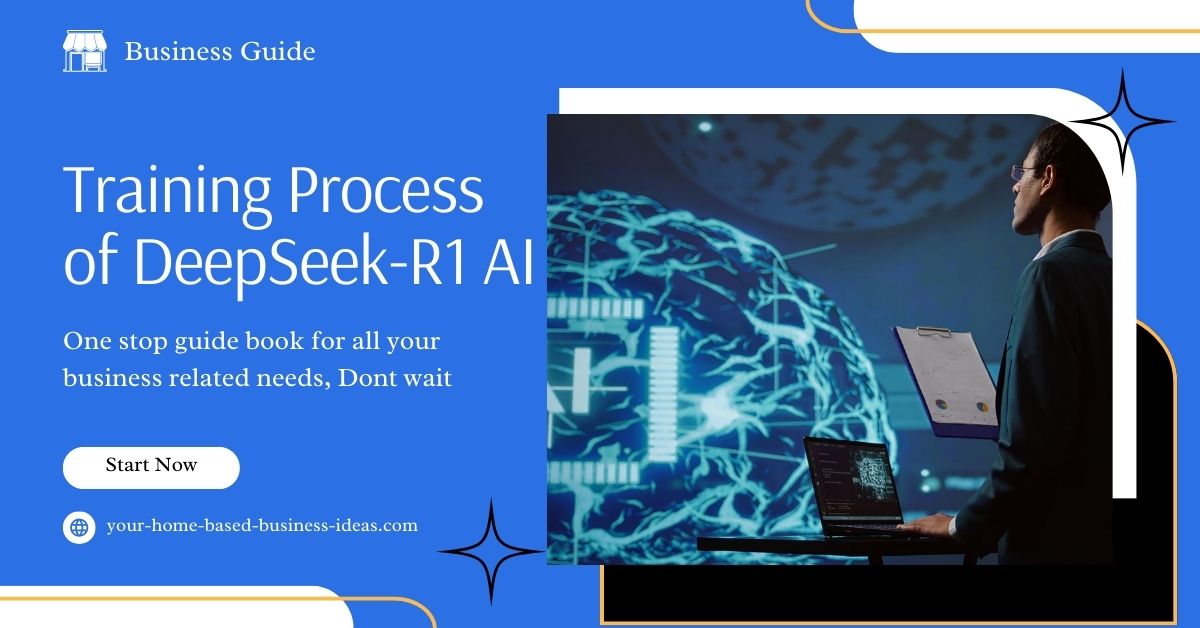Understanding the Training Process of DeepSeek-R1 AI
Introduction
Artificial Intelligence (AI) has rapidly evolved over the years, with deep learning models at the forefront of technological advancements. One of the latest breakthroughs in AI research is DeepSeek-R1 AI, a sophisticated model designed to push the boundaries of machine learning. Understanding the training process of DeepSeek-R1 AI is essential to appreciate its capabilities, performance, and future potential. In this article, we will explore the various stages of training, methodologies, and challenges involved in developing this cutting-edge AI system.
What is DeepSeek-R1 AI?
DeepSeek-R1 AI is a state-of-the-art deep learning model engineered to enhance AI applications in various fields, including natural language processing (NLP), image recognition, and data analysis. This model employs advanced neural network architectures, massive datasets, and cutting-edge algorithms to achieve superior accuracy and efficiency.
Importance of AI Training in Deep Learning Models
AI models do not function optimally without proper training. The training process ensures that an AI system learns patterns, adapts to new information, and improves accuracy over time. DeepSeek-R1 AI undergoes rigorous training, enabling it to provide highly relevant and precise outputs across different domains.
Dataset Collection and Preparation
Sourcing High-Quality Data
The foundation of any deep learning model lies in its dataset. For DeepSeek-R1 AI, acquiring high-quality, diverse, and representative datasets is crucial. Data is collected from various sources, including:
- Open-access research papers
- Publicly available datasets
- Proprietary datasets from industry collaborations
- Web crawlers for real-time data updates
Data Cleaning and Preprocessing
Raw data often contains inconsistencies, missing values, and biases. Preprocessing techniques such as normalization, tokenization, and augmentation ensure that DeepSeek-R1 AI receives clean and structured input, leading to better learning outcomes.
Neural Network Architecture
DeepSeek-R1 AI utilizes a multi-layered deep neural network to process vast amounts of data. Some key components of its architecture include:
- Transformer Models: Essential for NLP tasks, enabling the AI to understand context and semantics.
- Convolutional Neural Networks (CNNs): Used for image-related applications, allowing feature extraction and classification.
- Recurrent Neural Networks (RNNs): Helpful in sequential data analysis, such as time-series forecasting.
Training Methodologies Used in DeepSeek-R1 AI
Supervised Learning
In supervised learning, the model is trained using labeled data. This approach helps DeepSeek-R1 AI understand relationships between input and output pairs, making it effective for tasks like text classification and sentiment analysis.
Unsupervised Learning
For certain applications, unsupervised learning allows DeepSeek-R1 AI to identify hidden patterns within data. Clustering and dimensionality reduction techniques help in making sense of large and complex datasets.
Reinforcement Learning
DeepSeek-R1 AI also integrates reinforcement learning, where the model learns by interacting with an environment. Through rewards and penalties, it refines its decision-making abilities, improving performance over time.
Training Phases of DeepSeek-R1 AI
Pre-Training Phase
During the pre-training phase, the AI model learns general knowledge from massive datasets. This step involves:
- Masked language modeling (for NLP tasks)
- Object detection (for vision-related tasks)
- Feature extraction from various input types
Fine-Tuning Phase
Fine-tuning involves adjusting the pre-trained model for specific tasks. This phase requires:
- Transfer learning techniques
- Task-specific datasets
- Hyperparameter optimization
Validation and Testing
Once training is complete, DeepSeek-R1 AI undergoes rigorous validation and testing to evaluate its performance. Metrics such as accuracy, precision, recall, and F1-score help determine the model’s effectiveness.
Challenges in Training DeepSeek-R1 AI
Computational Power Requirements
Training deep learning models demands significant computational resources. High-performance GPUs and TPUs are essential to process large-scale data efficiently.
Data Bias and Ethical Concerns
Bias in training data can lead to biased AI outputs, affecting fairness and inclusivity. Ensuring ethical AI development is a critical aspect of training DeepSeek-R1 AI.
Overfitting Issues
Overfitting occurs when the model learns noise instead of actual patterns. Techniques like dropout, regularization, and cross-validation help mitigate this issue.
Applications of DeepSeek-R1 AI
DeepSeek-R1 AI finds applications in various fields, including:
- Healthcare: Assisting in disease diagnosis and personalized treatments.
- Finance: Fraud detection and risk assessment.
- E-commerce: Personalized recommendations and chatbots.
- Autonomous Systems: Self-driving cars and robotics.
Future of DeepSeek-R1 AI
With continuous advancements in AI research, DeepSeek-R1 AI is poised to become even more powerful. Improvements in data efficiency, model interpretability, and real-time learning will shape the next generation of AI models.
FAQs
How long does it take to train DeepSeek-R1 AI?
The training duration varies based on dataset size, computational power, and model complexity. It can take weeks to months for complete training.
What programming languages are used in training DeepSeek-R1 AI?
Languages like Python, TensorFlow, and PyTorch are commonly used for developing and training deep learning models like DeepSeek-R1 AI.
Can DeepSeek-R1 AI be used for real-time applications?
Yes, with optimized inference models and edge computing, DeepSeek-R1 AI can handle real-time processing efficiently.
Also Read – DeepSeek-R1 AI for Business: How It Can Improve Efficiency





